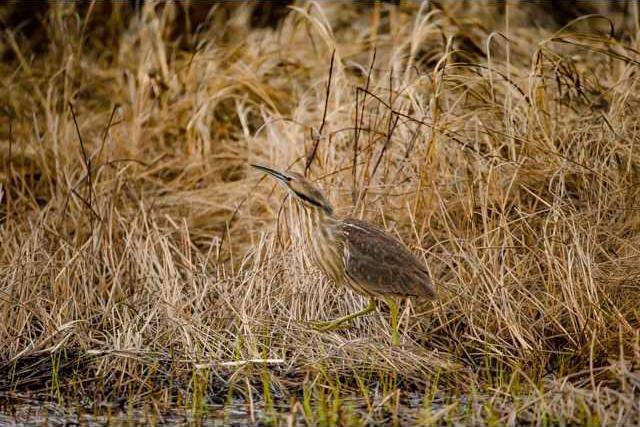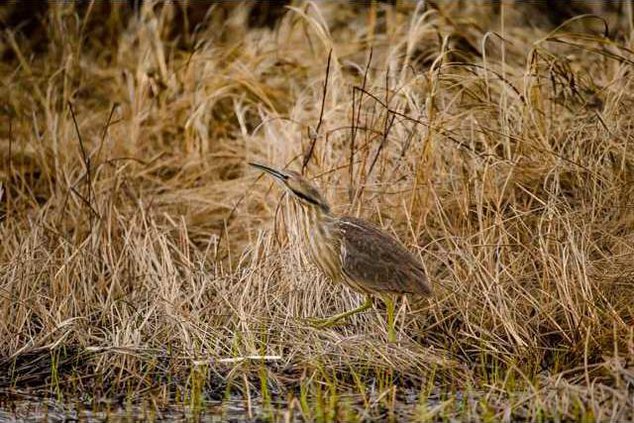Grab your hat, jacket and binoculars and get out the door as quick as you can! The spring migration is upon us!
I was honored this past week to get to go to the Bottoms and Quivira with some old and some new friends. The attraction and power of these birds is pure magic. We looked for Whooping Cranes, but it appears that their migration is past us now. There were several at Quivira last week, but I never saw one at the Bottoms.
A lady from Overland Park spotted a Bittern close to the road at Quivira. This member of the heron family arrives in the spring and will nest in the Bottoms and Quivira. It will stand in the reeds at the edge of the marsh and extend its head upward to “disappear” into the cat tails and is very precise and careful when moving through the foliage. They are hard to spot, but give themselves away with their “squawk” when they fly or converse with their friends. They are not common, and it is one of the birds that are “signature” to our wetlands during the migration.
Snowy Plovers are very small white birds with a huge attraction for the birding community. They race up and down the shore line and also feed on the roadways of our marshes. A black collar and brown or black caps and cheek patches are characteristic. They nest on the edges of the roads, so be careful walking the dikes and roads. Their cousins, the Piping Plovers, have a black neck band all the way around and seem to prefer the Kansas River between Manhattan and Lawrence for their nesting sites. This bird is endangered and is very special to the birders. It is a good day when we get to see these little guys.
Avocets, Black-necked Stilts, Yellow Legs, Pelicans, several different sandpipers and the usual groups of ducks—primarily Northern Shovelers, Blue-winged teal and Ruddy Ducks are close to the shore and not very nervous which makes photography a lot easier. The egrets are dragging their feet a little bit and are not here in force. Soon the Cattle Egrets will be following the livestock around the pastures and getting the bugs they stir up. I’m also waiting to see a Upland Sandpiper chirping on a fence post.
It is worthwhile to drive the country roads and look for pheasants and quail. The breeding plumage is spectacular, and the boys are eager to challenge each other over the favors of the hens. Stay alert—the Prairie Chickens are going back and forth to the leks for their ceremonies and dance contests—they are dressed up in their finest outfits right now.
There are lots of pictures of these movie stars in the marsh and pastures that I would show you — but Mr. Hogg has limited space for my musings and passion — and probably a limited tolerance for all this bird news but it sure is fun!
Doc
Doctor Dan Witt is a retired physician and nature enthusiast.







